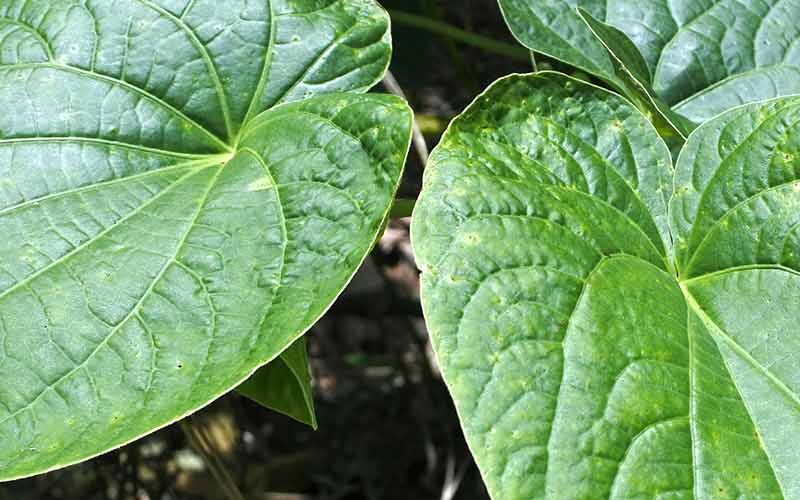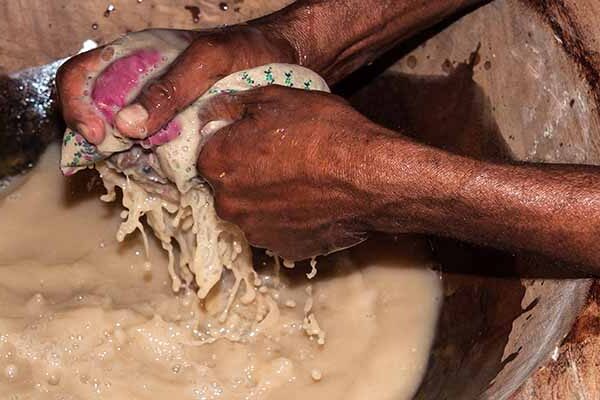05 Jan Chemistry of Kava
KAVA CHEMISTRY
Kava is, in some ways, the opposite of caffeine. The mild psychoactive ingredients found in kava are called kavalactones. There are 18 different kavalactones in kava that we know of which help provide that subtle psychoactive positivity. Of these, six constitute approximately 95% of the extract derived from the rootstock.

Primary kavalactone chemical structure
KAVALACTONES

The root of the pepper plant (piper methysticum) used to produce the kava drink which has sedative, anesthetic, euphoriant, and entheogenic properties.
The exact mechanism of action is postulated to enhance ligand-binding to gamma-Aminobutyric acid (GABA) and reduced re-uptake of norepinephrine (fight or flight hormone). This is responsible for the calming and relaxing properties of kava. Numerous clinical studies have shown kava to be a strong anxiolytic (anti-anxiety) and antidepressant in treating people with low to moderate general anxiety disorders. Every different type of kava plant however, can give different effects, and this has to do with the kavalactone concentrations present in the specific type of kava.
The six most commonly attributed active ingredients are as follows: 1 Demethoxy-yangonin (DMY), 2 dihydrokavain (DHY), 3 yangonin (Y), 4 kavain (K), 5 dihydromethysticin (DHM), 6 methysticin (D).

Piper methysticum plant leaves agriculture in Fiji. The roots of the plant are used to produce the Kava drink that consumed throughout the Pacific Ocean cultures of Polynesia for its sedating effects.
THE KAVA PLANT
Kava is an asexual plant, which means it produces no seeds. Therefore the many varietals of kavas that exist today are based exclusively on farmer selection over the past couple thousand years. In other words, they copied the kava plants that made them feel the best, and didn’t bother growing the rest. This is one way to distinguish between “noble” kava and other types of kava. It is because of this kava cloning that researchers today, aside from morphological characteristics, can distinguish between “Melomelo” from Ambae Island and “Kaolik” from Tanna. Each of these is identified mainly by the balance of those six kavalactones.
KAVA CHEMOTYPES
Each of these particular kavas, including “Melomelo”, has what’s known as a specific chemotype. It’s like looking at a nutritional label for kava; the ingredients are listed in order of content. In the world of kava, the chemotype can be listed for example: 1,2,3,4,5,6. In this case, the kava has a highest percentage of 1 Demethoxy-yangonin, and the least amount of 6 Methysticin. Every noble kava has a particular well-defined ratio of the different kavalactones

A man making the traditional kava drink of Fiji
What’s interesting about kava is the synergistic value of these ingredients. Scientists have isolated most of these kavalactones, and when consumed independently, the resulting “effect”, no matter the dose, will never be as good as finding the right combination of these six ingredients.
KAVA ORIGIN MATTERS
Some kavas grown in Hawaii and Fiji tend to be a little richer in Dihydromethysticin, and some in Vanuatu have a higher concentration of Kavain. This matters for a couple of reasons: the Hawaiian and Fijian kavas might make you feel a little better, but you might also feel a little full and funny. Whereas kavas that typically have a higher concentration of kavain, such as Vanuatu kavas, leave you more relaxed, without that “heavy” feeling. We carry both types of kava but tend to prefer the strands from Vanuatu. We have even established our own partnership with the growers in Vanuatu to make sure we are getting the highest quality kava available.


